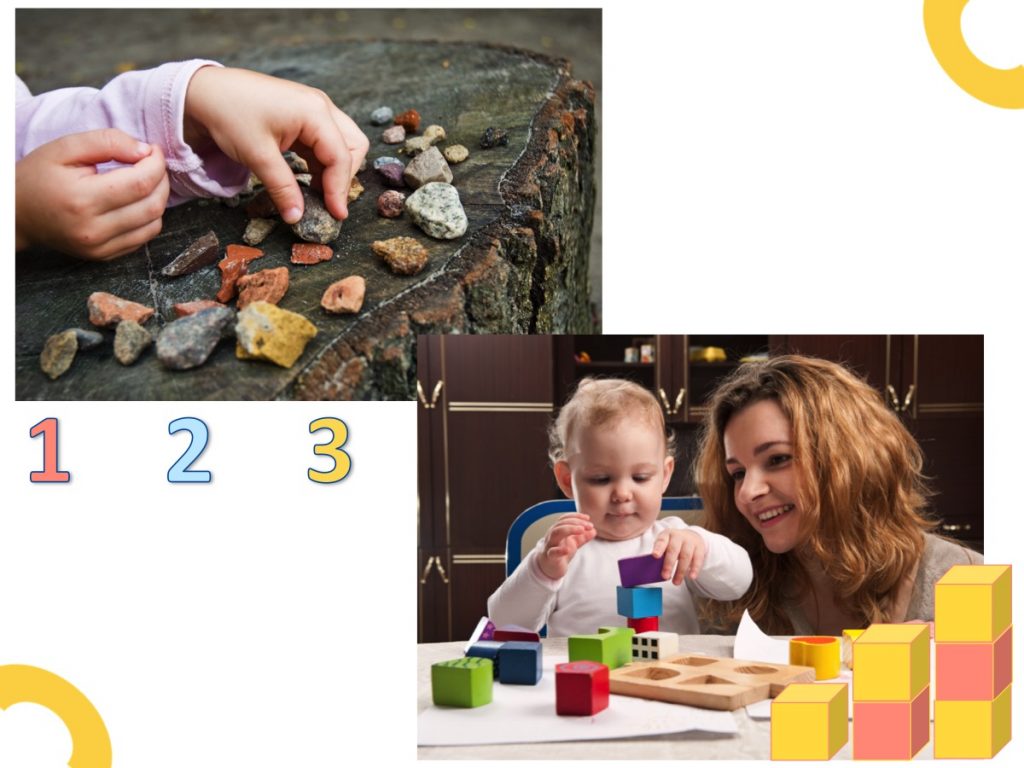
Picture an infant putting objects into a container and taking them out again. Or a toddler placing one stacking ring on top of the other or removing one block from a stack of three. They are building concepts of number, addition, and subtraction. Now, imagine a preschooler passing out three carrots to each child during snack. He is developing an early concept of division. Or, picture a child touching each rock in a pile as she counts aloud. She is practicing one-to-one correspondence. Each child is learning foundational skills for developing concepts of number and operations.
Number and operations is more than memorization of facts or rote counting. Research shows that memorization and rote counting alone do not increase math proficiency. Number and operations include a variety of math concepts such as:
- counting
- one-to-one correspondence
- adding or removing objects from a group
- comparing groups of objects, and
- addition and subtraction
Toddlers learn best by manipulating small groups of up to 3 objects. By using small groups, it’s easier for young children to see the change when you add or remove an object. By the age of four, many children can tell the number of objects in groups of 3 to 5 objects, without counting them. This is called subitizing.
-
- Cardinality
- is the concept that, when counting objects, the last number represents the total number of objects in the set
- Measurement
- includes size, length, height, weight, volume, distance, and time
- Number and operations
- refers to a set of math concepts related to understanding and representing numbers and operations (e.g., addition, subtraction, multiplication, and division) and the relationships between them
- Numeracy
- is the ability to understand and reason with numbers
- One-to-one correspondence
- refers to matching one object to each number word when counting
- Subitizing
- refers to the ability to identify the number of objects in a small group of objects without counting them
- Scaffolding
- is offering the right level of support to help a child achieve more than they would be able to on their own